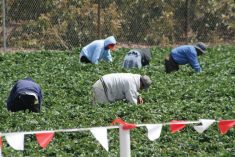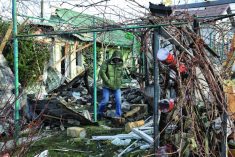The drought didn’t put a damper on land prices.
The average price for farmland across the country shot up 8.3 per cent last year, according to the latest price survey by Farm Credit Canada. That’s up nearly three per cent from the 5.4 per cent rise seen in 2020.
“I’m not surprised that farmland values continue to increase, but I am a bit surprised by the magnitude of the increase, quite frankly,” said FCC’S chief economist J.P. Gervais.
Read Also

Grazing ‘sweet spot’ boosts pasture performance
Timing-focused approach to pasture management touted to boost forage growth, livestock gains while also cutting farmer labour and inputs
“We had seen a bit of a slowdown in the rate of increase, but now we seem to have a bit of an acceleration in the rate of increase.”
That can be largely attributed to the fact there are a lot of would-be buyers, but not a lot of sellers.
“On the supply side in a lot of different areas, you’ll find supply being very limited in terms of what’s available for sale,” he said.
“The fact that demand is strong and that land values continue to increase reflects some of the optimism and outlook for growth within the industry.”
That was the case in Ontario and B.C., which saw the largest rates of increase (22.2 per cent and 18.1 per cent respectively, up from 4.7 per cent and 8.0 per cent respectively in 2020).
“There are a lot of different areas where the supply of land available for sale was really tight, and that tends to push up land values overall,” said Gervais.
Alberta, on the other hand, had the smallest rate of increase at 3.6 per cent — down significantly from the 6.0 per cent seen in 2020.
But that average doesn’t tell the tale.
Both dryland and irrigated acres in southern Alberta saw the biggest jump in value, at 6.2 per cent and 10.7 per cent respectively, while the northern region saw the smallest rate of increase, at 1.5 per cent.
And while a number of other factors influenced demand for farmland last year — low interest rates, strong commodity prices — the drought likely wasn’t one of them.
“It’s too early to say that it’s not going to have an impact, but so far, we haven’t seen any signal indicating the drier conditions in 2021 slowed at a significant level the increase we’ve seen in land values,” said Gervais. “That’s something we’re going to continue to monitor in 2022.”
FCC analyzed past weather events that were significant on the Prairies — like drought conditions in the 1980s and flooding in the 1990s — to determine if they had an impact on the rate of increase in farmland prices.
While it did find “a little bit of a slower rate of increase” in the years following significant weather events, the situation is different today, said Gervais.
“One of the things that’s quite different right now is the overall environment in the marketplace, where we have really strong commodity prices offsetting some of the lower yields that we’ve had,” he said.
“So right now, I’m not surprised we haven’t seen an impact — nothing distinguishable anyway — but we’re going to continue to monitor it and see if it slows down any demand for farmland.”
Volatile markets
What happens next is even harder to predict than usual.
Many analysts expected ag commodity prices to fall this year — until Russia invaded Ukraine and buyers worried about the prospect that exports would be curtailed from one of the world’s major grain-growing regions. That saw, for example, wheat prices shoot up, but then later fall on news that global ending stocks would be higher than earlier forecast.
Get used to that sort of ride, Gervais suggested.
“That volatility existed in the marketplace prior to the war between Ukraine and Russia, but the war amplified some of the volatility we’ve seen,” he said. “There’s going to be a lot of volatility in 2022.”
Still, the price fundamentals look strong.
“No matter what’s going on between Russia and Ukraine, we have tight inventories of grains and oilseeds in the marketplace with really strong demand,” said Gervais, adding that farm income is the No. 1 driver of farmland values.
“We have elevated commodity prices right now, but at some point in time, those prices are going to subside and nobody knows when,” he said. “So you have to have realistic expectations of what yields are going to look like going forward, as well as what commodity prices you can expect in the marketplace.”
Interest rate hikes will also be a factor in land-purchase decisions, but not likely a big one given the supply situation, Gervais said.
“We’ve already had one increase, and we expect at least four other increases from the Bank of Canada. That’s going to elevate borrowing costs for farm operations, and that’s something to consider as well. (But) it’s not going to disrupt supply and demand of farmland to a significant extent.”
A bigger concern is the price of inputs, which have already shot up and could go higher as Russia’s war on Ukraine roils markets for fertilizer and energy.
“Profitability is going to be challenged,” said Gervais.
And given so much volatility, producers should not only have a marketing plan, but should also be reviewing their finances, he said.
“A risk management plan is absolutely critical,” said Gervais. “Sit down with your accountant or financial adviser to really understand what kind of risk you’re exposed to with regards to rising interest rates, and see if there’s an opportunity to take some risk off the table by locking in loans at an affordable rate.”
And just because the land market is hot, doesn’t mean you should jump in, he added.















